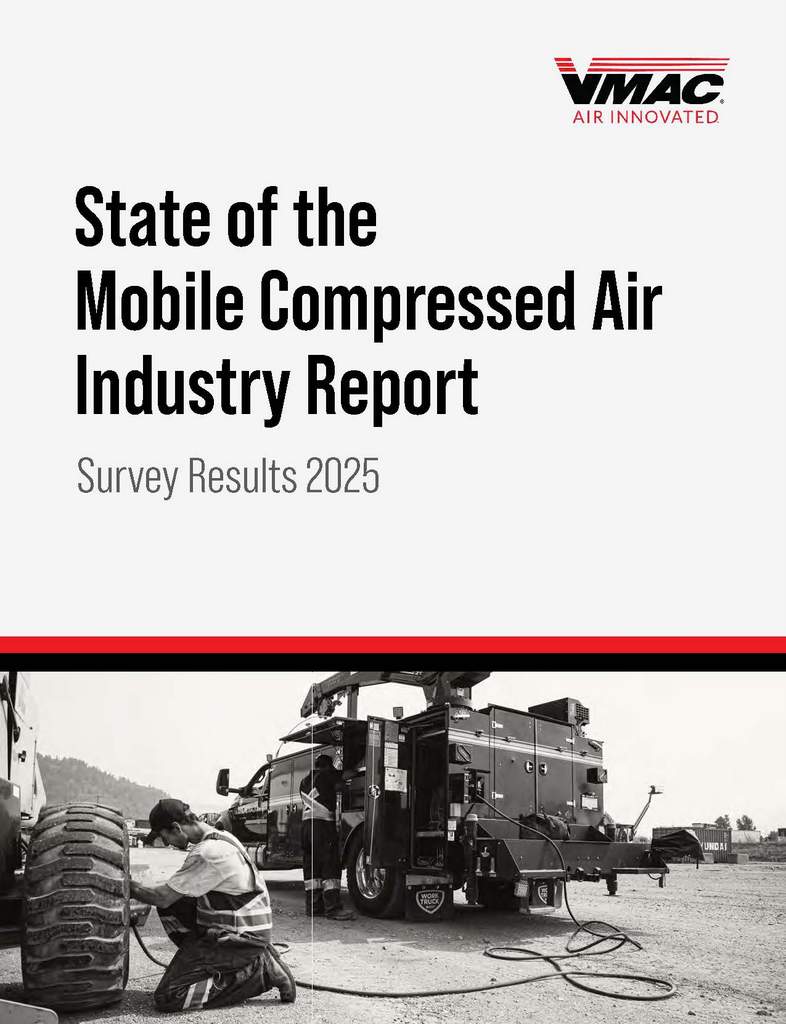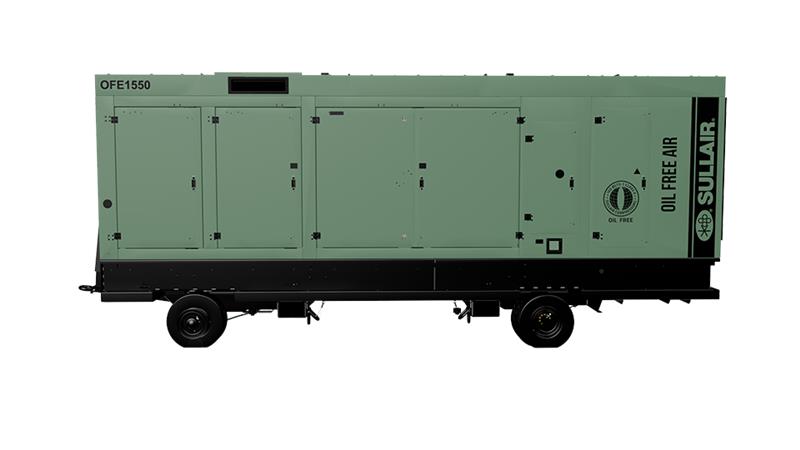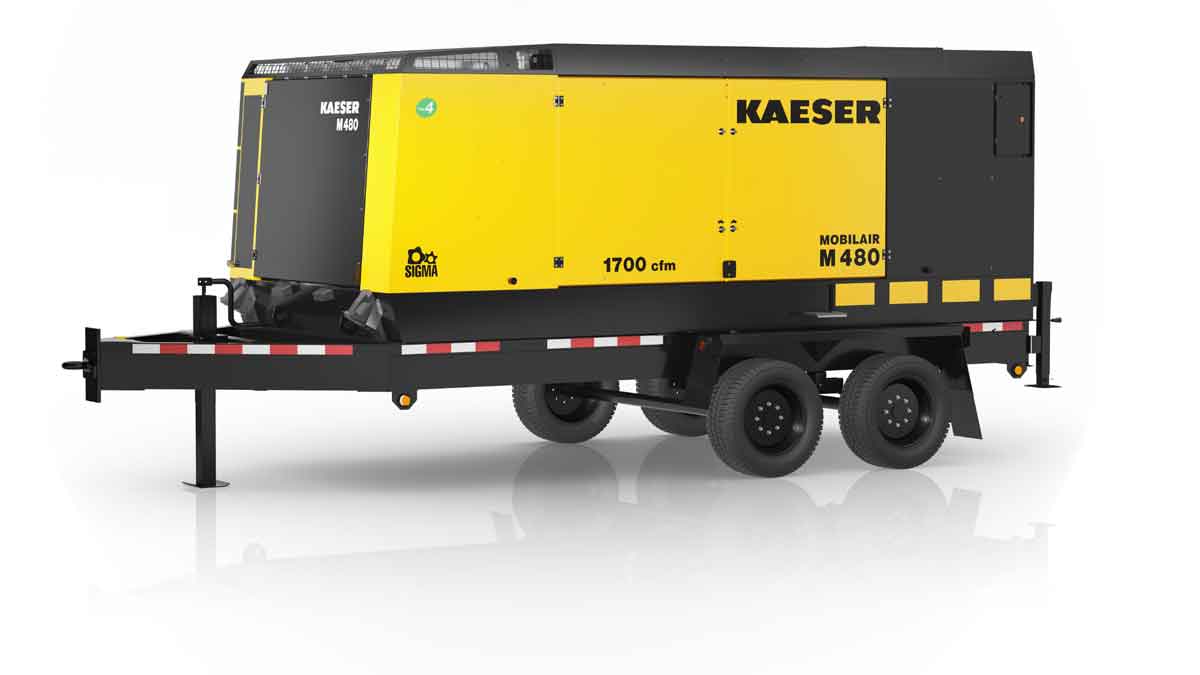The Compressor Crew: Three Industry Experts Give Advice and Insights for Air Compressor Pros

Compressed air is a versatile tool. Commercial-grade, diesel-powered air compressors can generate power for a variety of hand-held devices — from paint systems to breakers — and a variety of operations — from sprinkler cleanouts to directional boring applications. Portable air compressors are even more versatile. Tow-behind units can be easily transported to all types of jobsites, which make them popular rental purchases. Go from running multiple pneumatic tools to irrigation blowouts to media blasting. As an old pro or an occasional renter, it makes you kind of wonder if you’re getting the most out of your air compressor purchase. This protean piece of equipment is getting more high tech, more customizable and more versatile each year. To help explain this evolving power unit (its many models, options and applications), we asked for insights and advice from three top product managers behind famous air compressor brands Sullair, Atlas Copco and Doosan Portable Power. We thank them for their contributions.
Maintenance and Safety Measures
By Jerel Cole, Sullair Senior Product Manager
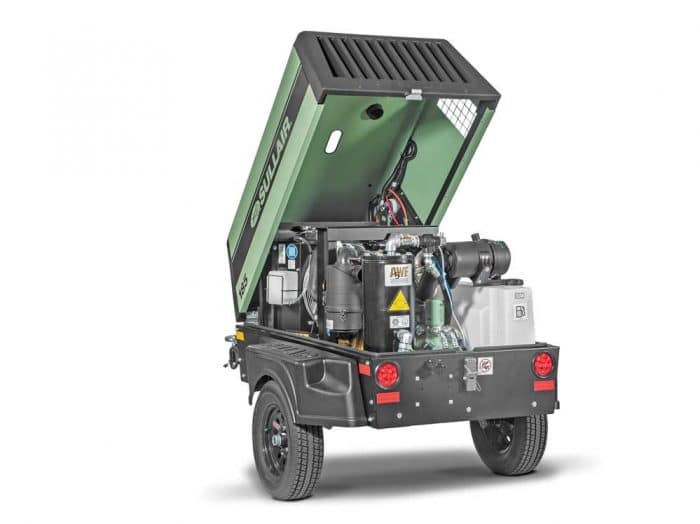
Daily air compressor maintenance is vital to ensure optimal performance. OEM consumable parts are recommended to keep your compressor running in tip top shape. In addition to a visual inspection, the machine should be checked daily for the following: check all oil and fluid levels in the engine and compressor; check diesel exhaust fluid as applicable; fill the fuel tank and drain any water from the fuel/water separator; check the radiator fluid; and check the air inlet filters and clean if necessary. Set frequency maintenance plans may vary based on engine manufacturer, compressor size, climate and day-to-day operating conditions, but Sullair generally recommends maintenance at 500 hours, 1,000 hours and 1,500 hours. Use of Sullair All Weather Fluid for portable compressors will provide easy cold-weather starting and exceptional operation in hot or severe conditions. Typically, the compressor fluids and separator elements are both replaced every 1,500 hours.
The best portable compressor is a working compressor. A telematics solution will allow you to remotely track machine hours for service and maintenance along with the machine’s GPS location. Telematics can alert equipment owners or renters to fuel consumption and level, maintenance reports/faults, compressor health monitoring, maintenance planning and more to help you keep the compressor working properly and safely.
As long as the pandemic endures, make sure you have a cleaning regimen in place. Be sure to clean and disinfect your portable air compressor to help prevent the spread of COVID-19. Pay special attention to high-touch surface areas such as buttons, controls, latches, knobs, gauges, access doors, handles, the drawbar and valves. Use a standard sanitizing wipe or cloth with EPA-registered household disinfectant to sanitize frequently touched areas either daily or each time a different operator uses the compressor.
Consider a 110-cfm Model
By Will Mazurek, Atlas Copco Product Manager
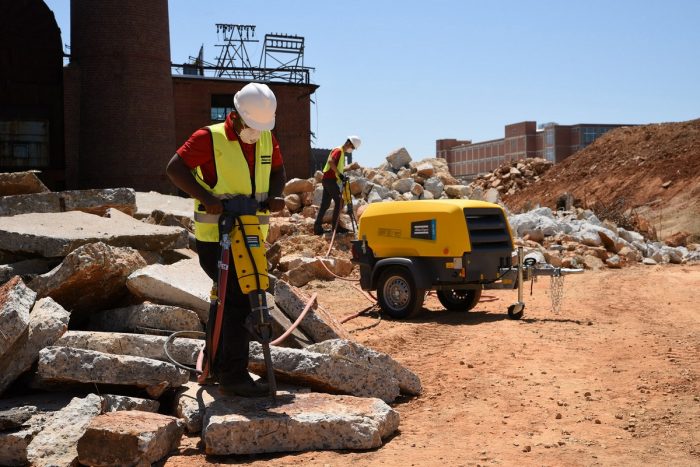
A piece of advice that would help both buyers and renters is to consider a 110-cfm model over a 185 to 188 model for certain applications. The XAS110 (110 cfm) and the XAS188 (188 cfm) units operate at the same pressure, just with different flows. If a customer is looking to buy or rent a compressor to run multiple small tools, hammers or actuation applications where the cfm consumption is under 110, then the XAS110 could be an option. Selecting the XAS110 in these situations offers an increased the return on investment, given the savings on the unit cost, fuel and footprint required to store the unit. Additionally, choosing the XAS110 can allow the XAS188 units to be better utilized for applications requiring the extra flow.
Market Shifts
By Cody Blythe, Doosan Portable Power Senior Product Specialist, Air Compressors
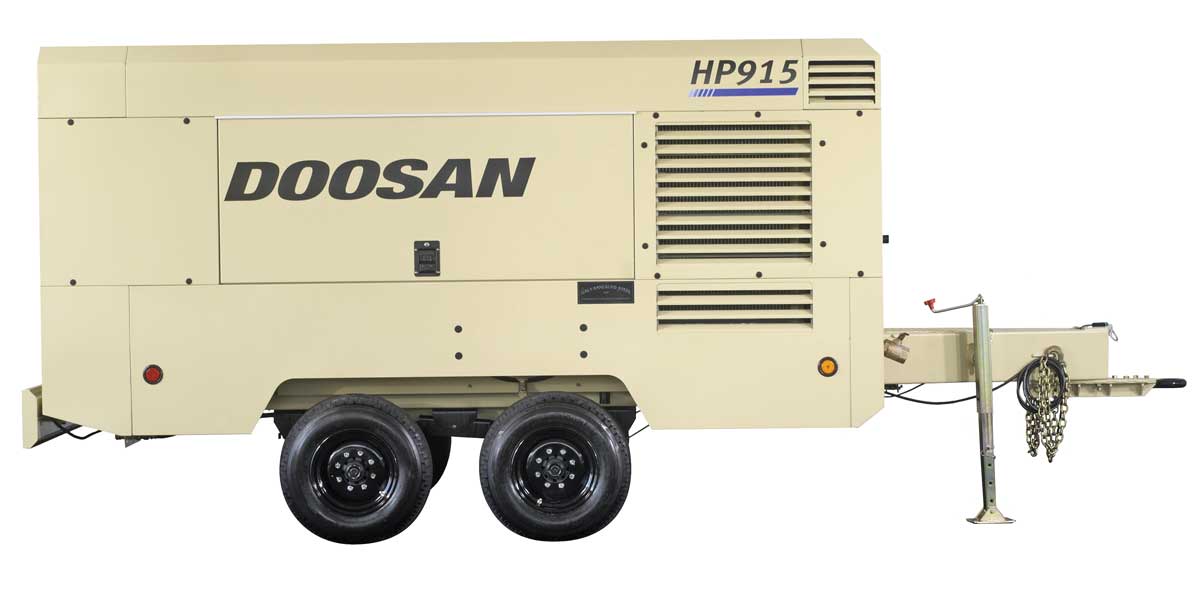
Fiber-optic utility installation has taken off. Smaller fiber-optic blowing machines that you see being used in residential neighborhoods typically require 200 psi but at less than 200 cfm. The pandemic has also caused high demand for residential pool construction, especially in warmer climates. Gunite pool installers prefer an air compressor that can deliver 900 to 1,000 cfm at 100 psi, like our HP915 unit. The job could also be completed with a slightly smaller machine, such as our XP825/HP750.
Electronic regulation controls along with a new generation of power dense engines with smaller footprints are allowing compressor manufacturers to combine what used to be multiple models into more compact and fuel-efficient models that are capable of serving a larger range of applications. These models often provide wider pressure ranges, allowing the compressor to be more versatile across the jobsite.
For example, our XP185-VHP165 FlexAir can deliver air ranging from 185 cfm at 80-100 psi to 165 cfm at 200 psi. Prior to its release, no machine in its size class could provide that high-end pressure. This is especially relevant for the fiber-optic utility sector. Smaller fiber-optic blowing machines require 200 psi but less than 200 cfm. With the new XP185-VHP165 capable of producing 200 psi, they can support these smaller fiber blowing machines without having to make the jump to the 400-cfm size class which is much larger and more expensive to operate. So now they can supply those blowers with air with the same size machine they would use to power most of their other pneumatic tools.
Air compressors, like most compact equipment, are becoming more capable at smaller size classes. When renting or purchasing a machine, focus on the free air delivery you need for your jobs and talk with your provider about what new machines might fit your application. You may find you can replace an older, larger machine with a new one that is smaller, uses less fuel and is easier to transport.
Plan Ahead
By Jerel Cole, Sullair Senior Product Manager
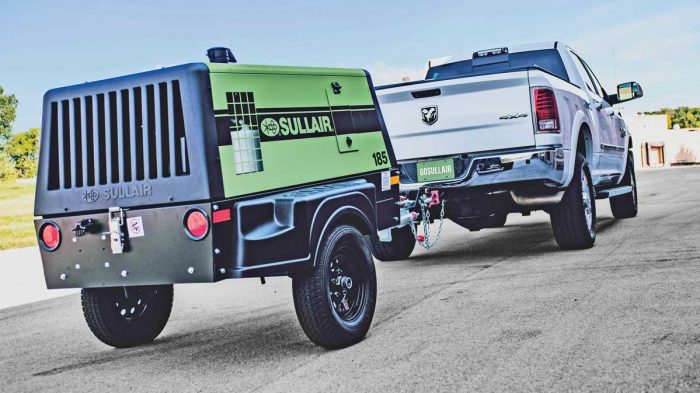
Towable air compressors continue to be vital in many applications, from construction (roads and bridges) to landscaping (sprinkler blowouts) to plant backup air to oil and gas and more. With the recent passage of the Infrastructure Bill, we expect the construction sector to get exceptionally busy as states allocate project funding for roads, bridges, transit, waterways and more. With this expected rise in demand, product availability will be key across all markets. We have seen a lot of information in the media about supply chain constraints in the United States and around the globe. Planning ahead to make sure you have the right equipment available on time to complete the job will be critical. Remember to order and stock the necessary service and maintenance parts such as compressor oil and air filters to keep equipment running in tip-top shape for the season.
Technology Highlights
By Will Mazurek, Atlas Copco Product Manager
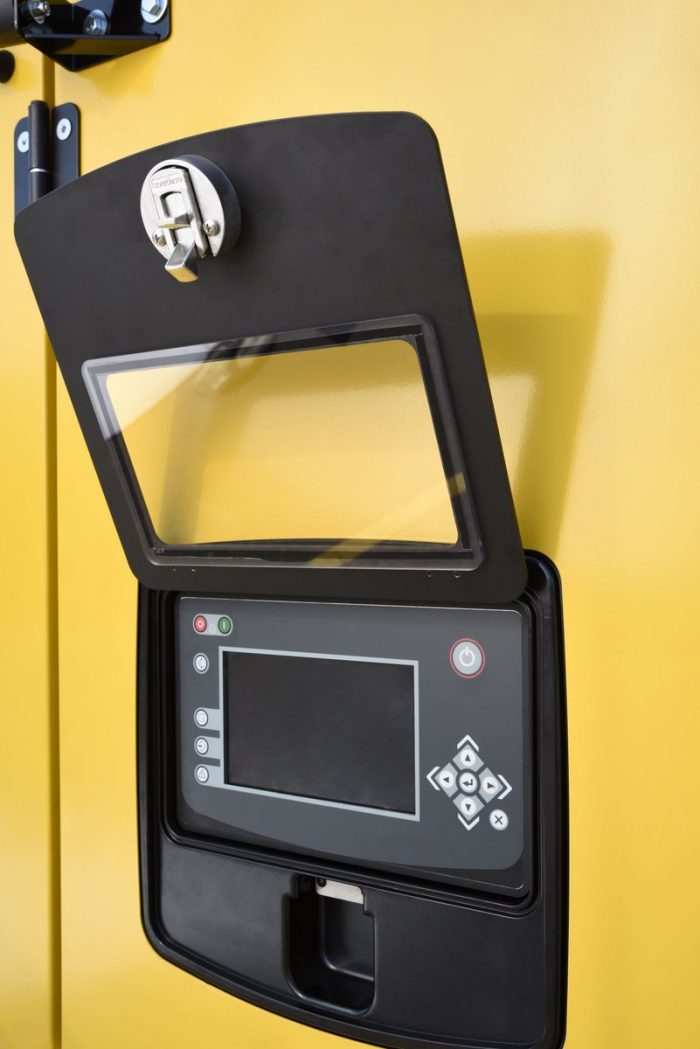
Technology is changing the portable compressor industry. A select few highlights from Atlas Copco would include P.A.C.E., the XRVS1550 and the Xc4004 Controller. Our P.A.C.E. (Pressure Adjusted through Cognitive Electronics) technology defines the pressure while the machine regulates the flow and allows the operator to view compressor parameters like: pressure settings; engine codes; two programmable service timers; temperatures; pressures; fuel levels and consumptions; and load/unload compressor stats. As the psi is adjusted, the unit will electronically adjust the rpms of the engine to provide the necessary cfm. We’ve applied advanced technologies like P.A.C.E. so that our customers and operators could simplify their fleet with units that are able to cover a wider range of applications. These technologies are featured throughout our full range of air compressors, up through the XAS1800, DrillAir High Pressure compressors and boosters.
The Atlas Copco XRVS1550 compressor offers programmable pressures ranging from 218 to 508 psi, as well as programmable flow. This allows for optimization of your application. Many operators are surprised at the capacities of this compressor, all without requiring DEF. The new Xc4004 Controller has been introduced to give the operator more control of the operation. More intuitive in nature, easy to use and navigate, the new controller gives much faster response to the change in parameters and is compatible to P.A.C.E. and the AirXpert Regulation systems built in our new generation compressors. More robust and compact, Xc4004 has a large antiglare screen and improved user interface. Thanks to innovative design and new features such as on-board creation of Histogram and trending of available parameters and remote-control operation, the new Xc4004 gives higher performance and protects your investment.
Atlas Copco regularly hosts live webinars that cover a wide range of topics that can help better your industry knowledge and productivity on the jobsite. All webinars are hosted on-demand that can be accessed through our website, LinkedIn or through your local Atlas Copco representative.
Sullair Product Overview
By Jerel Cole, Sullair Senior Product Manager
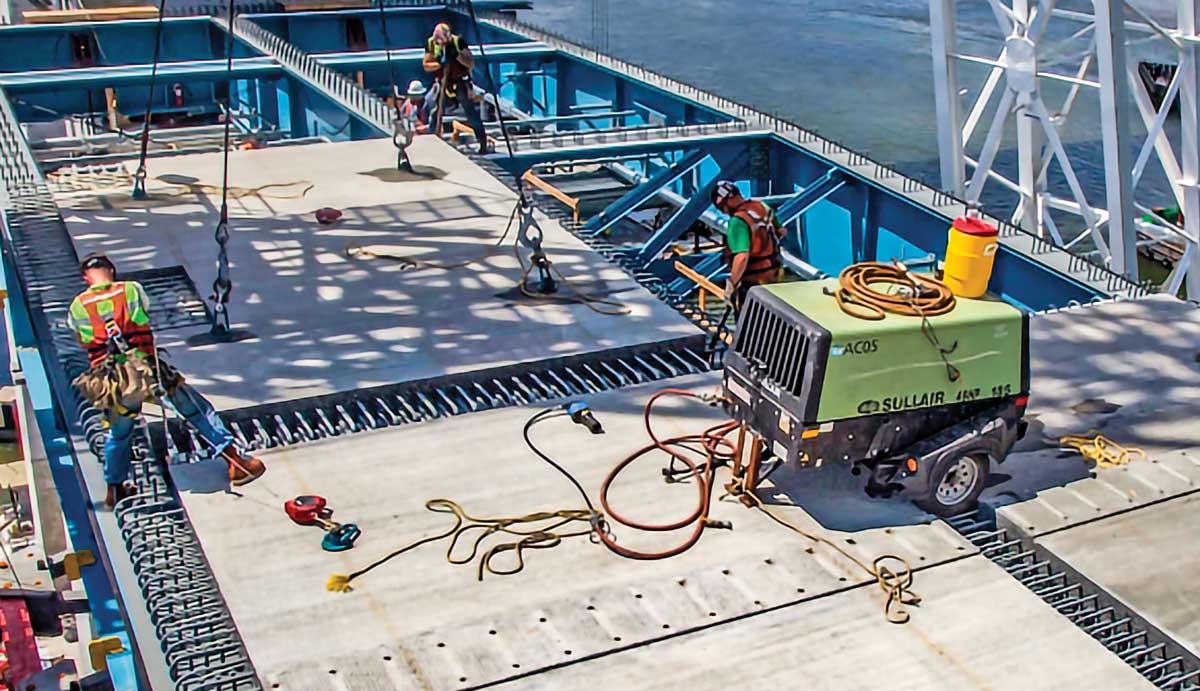
Sullair has a full line of portable diesel air compressor offerings that are designed to cover nearly every application, including construction and infrastructure, landscaping, oil and gas, plant backup air and more. With capacities ranging from 185 to 1,600 cfm at 100 to 500 psi, the company’s most popular model is its 185 Series Tier 4 Final portable air compressor. It contains the legendary Sullair airend and is compactly designed for easy maneuverability, service and maintenance. It is turbocharged to perform in high altitude environments, and its improved fuel efficiency and 27-gal fuel tank keeps it running for 10 hours. The newest line is the Mid-Range Series Tier 4 Final portable rotary screw air compressors, which feature electronic spiral valve technology to maximize fuel efficiency. The Mid-Range Series also allows for nearly infinite combinations of pressure and flow options and can do the job of nine different compressors. It includes a 7-in. color touchscreen for easy control even with work gloves on and, like the 185, it is designed to withstand harsh conditions such as high-altitudes and cold weather environments.
Keith Gribbins is publisher of Compact Equipment.
What can we say? We love rental. So much so that we published a Digital Rental Guide covering everything you need to know when renting a machine. Check it out here!

